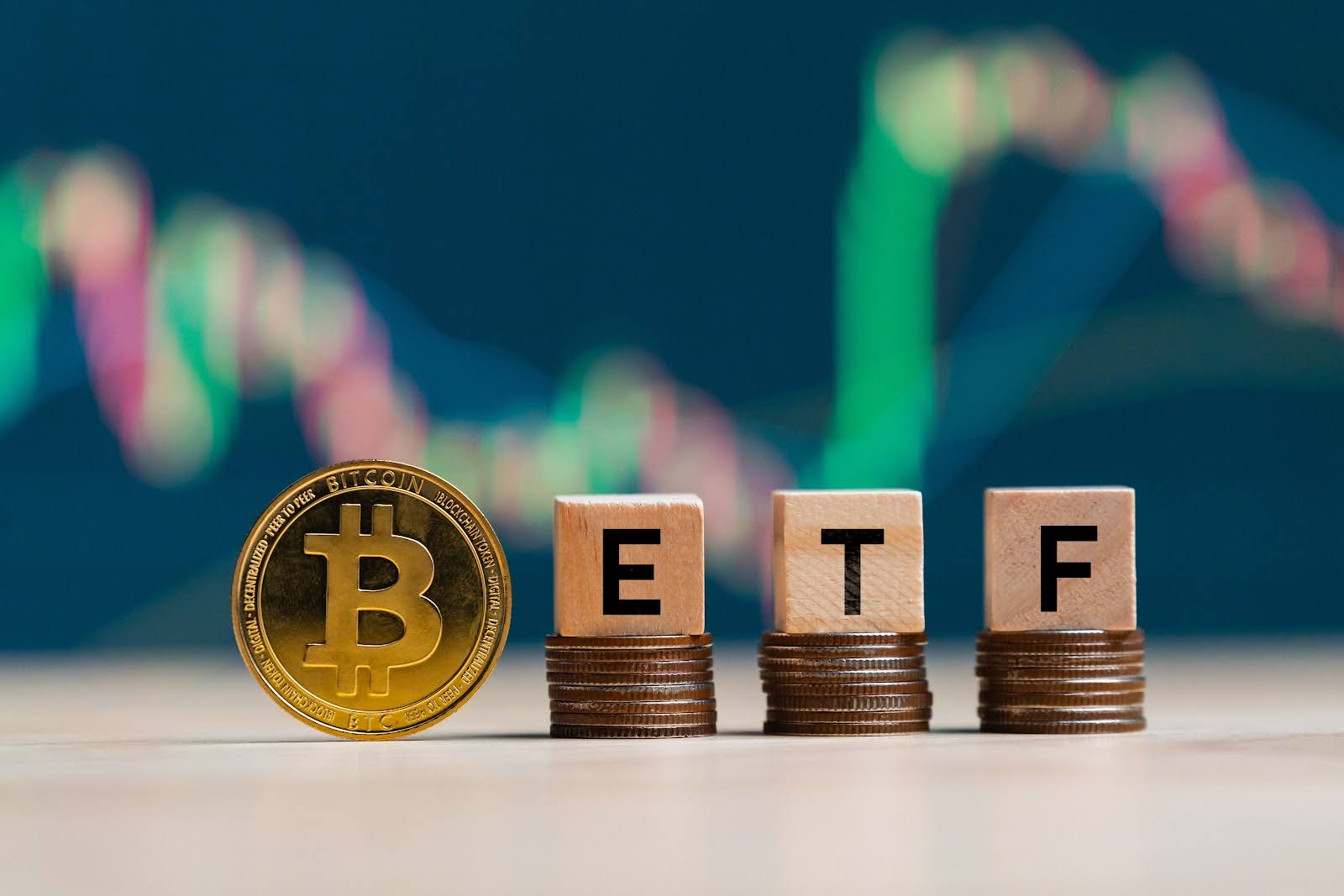Bitcoin Ether Etf Inflows Trends And Insights
As bitcoin ether etf inflows take center stage in the financial landscape, investors and enthusiasts alike are keenly observing their implications. These exchange-traded funds (ETFs) serve as a bridge for traditional investors seeking exposure to cryptocurrencies in a refined manner. Understanding the evolution and dynamics of Bitcoin and Ether ETFs opens a window into how these digital assets are reshaping investment strategies globally.
In recent years, the emergence of Bitcoin and Ether ETFs has transformed the investment paradigm, allowing individuals and institutions to navigate the digital currency market with greater ease. With increasing inflows into these ETFs, it’s essential to delve into the factors driving this trend, the regulatory environment, and the performance metrics that set them apart. This exploration not only highlights the current state of the market but also offers insights into what the future may hold for cryptocurrency investments.
Overview of Bitcoin and Ether ETFs
Bitcoin and Ether Exchange-Traded Funds (ETFs) have emerged as significant investment vehicles that allow investors to gain exposure to the world's leading cryptocurrencies without directly holding them. These funds are designed to track the performance of Bitcoin and Ethereum, respectively, providing an accessible way for retail and institutional investors alike to invest in digital assets.The emergence of Bitcoin ETFs began in earnest around 2013, with numerous proposals submitted to regulatory bodies worldwide.
The first Bitcoin ETF was approved in Canada in 2021, paving the way for other jurisdictions to follow suit. Following that, Ether ETFs began to appear, with the first one also launched in Canada shortly after Bitcoin ETFs gained traction.Key differences between Bitcoin and Ether ETFs lie primarily in the underlying assets they represent. Bitcoin ETFs focus solely on Bitcoin, while Ether ETFs track the performance of Ethereum, a blockchain platform known for its smart contract functionality.
Additionally, the price volatility and market dynamics of Bitcoin and Ethereum can lead to different performance metrics for their respective ETFs.
Recent Trends in ETF Inflows

Recent statistics indicate a notable increase in ETF inflows for both Bitcoin and Ether, reflecting a growing interest in cryptocurrency investments among various demographics. In 2023, Bitcoin ETFs experienced inflows exceeding $1 billion, while Ether ETFs saw approximately $500 million in new investments. Such inflows are influenced by several factors, including market sentiment, institutional adoption, and the overall performance of the cryptocurrencies involved.Several key factors influencing these inflows include:
- Increased mainstream acceptance of cryptocurrencies as valid investment assets.
- Institutional participation, with hedge funds and asset managers allocating capital to these ETFs.
- Regulatory clarity that has emerged in various countries, allowing investors to feel more secure in their investments.
The top Bitcoin and Ether ETFs by inflow volume include:
- ProShares Bitcoin Strategy ETF (BITO)
-Leading the market with substantial inflows. - Grayscale Bitcoin Trust (GBTC)
-A significant player, despite being structured differently. - Purpose Ether ETF (ETHH)
-Notable for its rapid acceptance and inflow levels.
Market Sentiment and Investor Behavior

Market sentiment plays a crucial role in determining ETF inflows for both Bitcoin and Ether. Positive news surrounding cryptocurrencies can lead to increased investor confidence, translating into higher inflows. For example, developments such as major financial institutions announcing Bitcoin investments often drive retail investor interest.Investor demographics participating in these ETFs are diverse. Younger investors, particularly those in the millennial and Gen Z brackets, are more likely to engage with cryptocurrencies.
Institutional investors, including pension funds and endowments, are also increasingly participating, signaling a shift towards mainstream acceptance of cryptocurrencies in traditional finance.Institutional investors are particularly influential in ETF inflows, as their large capital allocations can significantly impact market dynamics. Their interest often leads to further validation of cryptocurrencies as legitimate asset classes.
Regulatory Environment Impacting ETF Inflows

The regulatory landscape for Bitcoin and Ether ETFs is continually evolving. In the United States, the Securities and Exchange Commission (SEC) has been cautious, often delaying approvals for new Bitcoin and Ether ETFs. However, regulatory developments in countries like Canada and Europe have led to a more favorable stance, allowing various ETFs to gain traction.Different countries adopt distinct approaches to regulating cryptocurrency ETFs.
For instance, countries like Canada have embraced cryptocurrency ETFs, offering a range of products for investors. In contrast, countries with stricter regulations may hinder the growth of such financial products.Future regulatory changes could significantly impact inflows into Bitcoin and Ether ETFs. Potential regulatory easing in major markets like the U.S. could open the floodgates for more investors, while restrictive measures could dampen interest and inflows.
Comparative Analysis of Performance
When comparing the performance of Bitcoin ETFs versus Ether ETFs, several trends emerge. Historically, Bitcoin has exhibited higher volatility compared to Ether, leading to varying risk profiles for investors. A table summarizing historical returns of leading ETFs illustrates these performance differences:
| ETF Name | Annual Return (Last 3 Years) | Volatility Index |
|---|---|---|
| ProShares Bitcoin Strategy ETF (BITO) | +150% | High |
| Purpose Ether ETF (ETHH) | +100% | Moderate |
| Grayscale Bitcoin Trust (GBTC) | +120% | High |
Discussions on volatility differences between Bitcoin and Ether ETFs note that Bitcoin's larger market size can contribute to more significant price swings, affecting investor sentiment and long-term strategies.
Future Predictions for Bitcoin and Ether ETFs
Expert predictions regarding future inflows in Bitcoin and Ether ETFs are optimistic, with many analysts forecasting continued growth driven by technological advancements and increased adoption. The integration of blockchain technology in various industries is expected to enhance the appeal of these ETFs.Technological advancements, particularly in blockchain and crypto infrastructure, may improve the efficiency and reliability of these ETFs. Innovations such as decentralized finance (DeFi) could also offer new investment strategies, further attracting inflows.Potential market trends in the next few years may shift ETF inflows, particularly with increased institutional involvement and the potential approval of more diversified crypto ETFs.
As the market matures, evolving investor preferences may lead to significant changes in how these ETFs are structured and marketed.
Case Studies of Successful ETFs
Several Bitcoin and Ether ETFs have achieved notable success in attracting inflows. The ProShares Bitcoin Strategy ETF (BITO) has set records for the fastest inflows upon its launch, benefiting from strong market demand and strategic marketing.Strategies contributing to the success of these ETFs include:
- Clear communication of investment goals and risk factors to investors.
- Partnerships with reputable financial institutions to enhance credibility.
- Active management of the ETF's underlying assets to optimize performance.
Analyzing these case studies reveals valuable insights for new ETF launches, emphasizing the importance of regulatory compliance, investor education, and market timing in achieving success in a competitive landscape.
Last Point
In summary, the rising trend of bitcoin ether etf inflows underscores the growing acceptance of cryptocurrencies in mainstream finance. By examining the factors influencing these inflows, from market sentiment to regulatory developments, we can appreciate the intricate tapestry that shapes the ETF landscape. As we look ahead, understanding these elements will be crucial for both investors and industry participants in navigating the evolving world of digital asset investments.
General Inquiries
What are Bitcoin and Ether ETFs?
Bitcoin and Ether ETFs are investment funds that track the price of Bitcoin and Ether, allowing investors to buy shares that represent ownership of these cryptocurrencies without directly purchasing them.
How do ETF inflows impact cryptocurrency prices?
Increased inflows into Bitcoin and Ether ETFs can lead to higher demand for the underlying assets, potentially driving up their prices as more investors gain exposure through these funds.
What role do institutional investors play in ETF inflows?
Institutional investors often contribute significantly to ETF inflows, as they bring substantial capital and credibility to the market, influencing trends and overall investor sentiment.
Are there tax implications for investing in Bitcoin and Ether ETFs?
Yes, investing in Bitcoin and Ether ETFs can have tax implications similar to other investments, including capital gains taxes on profits made from selling shares, which vary by jurisdiction.
What should I consider before investing in a Bitcoin or Ether ETF?
Before investing, consider factors such as the ETF's management fees, historical performance, liquidity, and the regulatory environment, as these can affect your investment outcomes.

